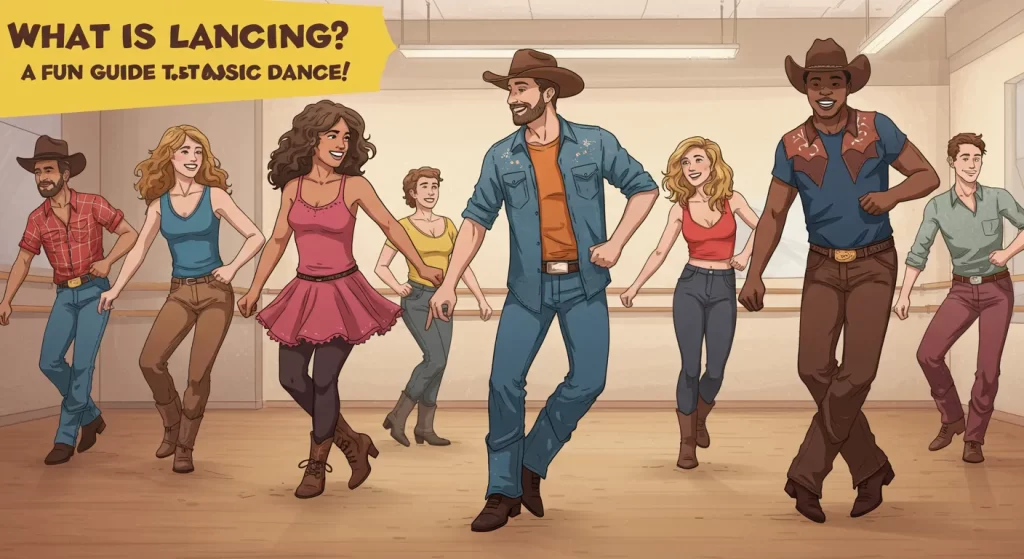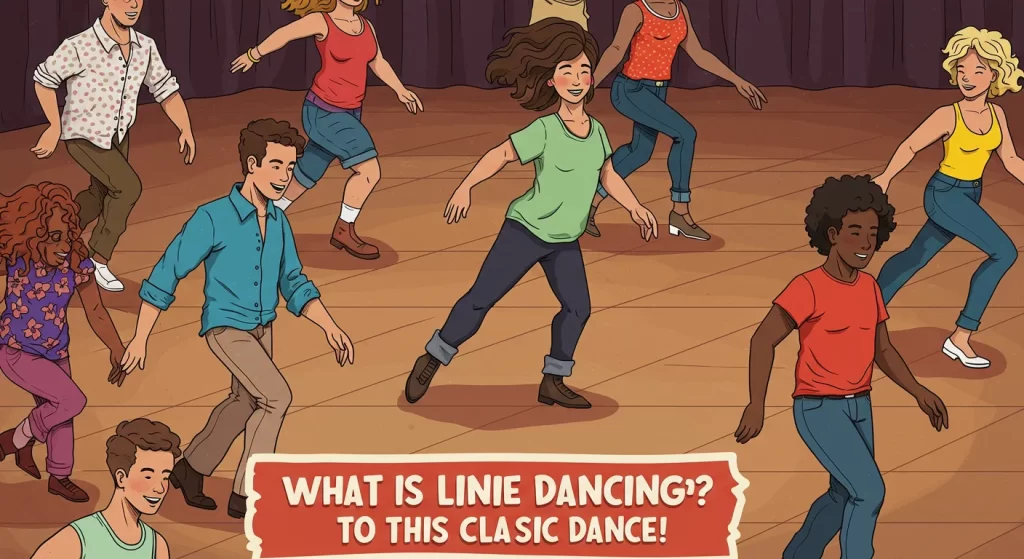Table of Contents
What is line dancing is a unique and enjoyable form of choreographed dance where a group of people perform a repeated sequence of steps in unison, arranged in lines or rows. Unlike partner dances, line dancing involves no physical contact between dancers, making it accessible for individuals regardless of whether they have a dance partner. This style is often performed facing the same direction, allowing everyone to move together harmoniously to the rhythm of the music.
The Roots and Evolution of a Timeless Dance
Line dancing has a rich history influenced by various cultural traditions, including European folk dances, African rhythms, and Native American movements. While it gained widespread popularity in the 1980s alongside country music, its origins trace back much further, blending elements from contra dancing and other folk styles.
Over time, line dancing has evolved to include a variety of music genres beyond country, such as pop, rock and roll, disco, Latin, and jazz, making it a versatile and inclusive dance form.
How the Dance is Structured

The choreography of line dances is based on counts that correspond to musical beats. Basic line dances often feature simple footwork, which makes them easy to learn for beginners. More advanced routines may incorporate arm movements, spins, and complex step sequences.
The structure typically involves repeating these sequences throughout the song, with some dances including special phrasing, tags, or bridges to match the music’s flow. This design allows dancers to quickly pick up the routine and enjoy the social aspect of dancing together.
Why People Love This Dance Style
One of the biggest appeals of line dancing is its inclusivity. Since it does not require a partner, it eliminates the common issue of balancing male and female dancers, which can be challenging in partner-based dances like salsa or ballroom.
This makes it ideal for social gatherings, dance clubs, and community events. The synchronized movements foster a sense of unity and community among participants, while the variety of music styles keeps it fresh and exciting.
Also Read: The Mystique of Korpenpelloz: A Cultural Journey
Popular Settings for Line Dancing
Line dancing is commonly practiced in country-western bars, social clubs, dance halls, and ballrooms. It is often part of dance programs that feature other country-western styles such as two-step, western shuffle, and promenade dances.
Additionally, line dancing is embraced worldwide, with many clubs offering classes and social dances that welcome all ages and skill levels. The casual dress code, often including dance trainers instead of traditional boots, reflects its broad appeal beyond just country music fans.
The Role of Music in Line Dancing
Each line dance is typically associated with a specific song or musical style, which helps define its rhythm and mood. Famous examples include the Electric Slide and the Macarena, both of which have become cultural staples.
The music choice influences the tempo and complexity of the dance steps, allowing dancers to express themselves while maintaining the choreographed sequence. This connection between music and movement is central to the enjoyment and popularity of line dancing.
Modern Variations and Trends

Today’s line dancing has expanded beyond its country roots to embrace a fusion of genres, including pop, Latin, Irish, and big band styles. Modern line dances often feature more casual attire and contemporary music, appealing to a wider audience. This evolution has helped keep the dance relevant and engaging, attracting younger generations and diverse communities to participate and learn.
The Social and Health Benefits
Line dancing offers more than just fun; it provides physical exercise that improves coordination, balance, and cardiovascular health. The repetitive steps and rhythmic movements make it a low-impact workout proper for people of all ages.
Socially, it encourages interaction and builds friendships, fostering a supportive environment that enhances mental well-being. Many community centers and senior groups have embraced line dancing as a way to promote active lifestyles and social engagement.
How to Get Started with Line Dancing
For beginners interested in trying line dancing, many local dance studios and community centers offer classes tailored to all skill levels. Starting with simple dances like the Electric Slide or the Cupid Shuffle can build confidence.
Watching instructional videos or joining social dance nights can also help newcomers learn the steps and enjoy the experience. The welcoming nature of line dancing means that everyone can join in, regardless of prior dance experience.
Common Misconceptions About the Dance

Some may think line dancing is only for country music fans or that it requires advanced skill. In reality, line dancing is highly adaptable and accessible. Its broad musical repertoire and varying difficulty levels make it suitable for anyone interested in dancing.
Furthermore, because it does not require a partner, it removes barriers that might discourage people from participating in other dance forms.
Keeping the Tradition Live in the Digital Age
With the rise of online tutorials and virtual dance classes, line dancing continues to thrive in the digital era. Enthusiasts can learn new routines from home and connect with global communities through social media and dance forums. This digital presence helps preserve the tradition while encouraging innovation and creativity within the line dancing world.
Final Thoughts
Line dancing is a vibrant, inclusive, and versatile dance form that brings people together through synchronized movement and shared enjoyment. Its rich history, adaptability to various music styles, and social benefits make it a popular choice for dancers of all ages and backgrounds. Whether you’re looking for a fun way to stay active or a new social hobby, line dancing offers something for everyone. So put on your dancing shoes and join the lines – the rhythm is waiting for you!
By embracing the spirit of line dancing, you not only enjoy a timeless dance but also become part of a welcoming community that celebrates music, movement, and connection.
FAQs
What is line dancing?
Line dancing is a choreographed dance where people perform repeated steps in unison, arranged in lines without needing a partner.
Do I need a partner to line dance?
No, line dancing is partner-free, making it accessible for anyone regardless of dance experience or having a partner.
What types of music are used in line dancing?
Line dancing includes country, pop, rock, disco, Latin, jazz, and more, making it versatile and appealing to diverse tastes.

